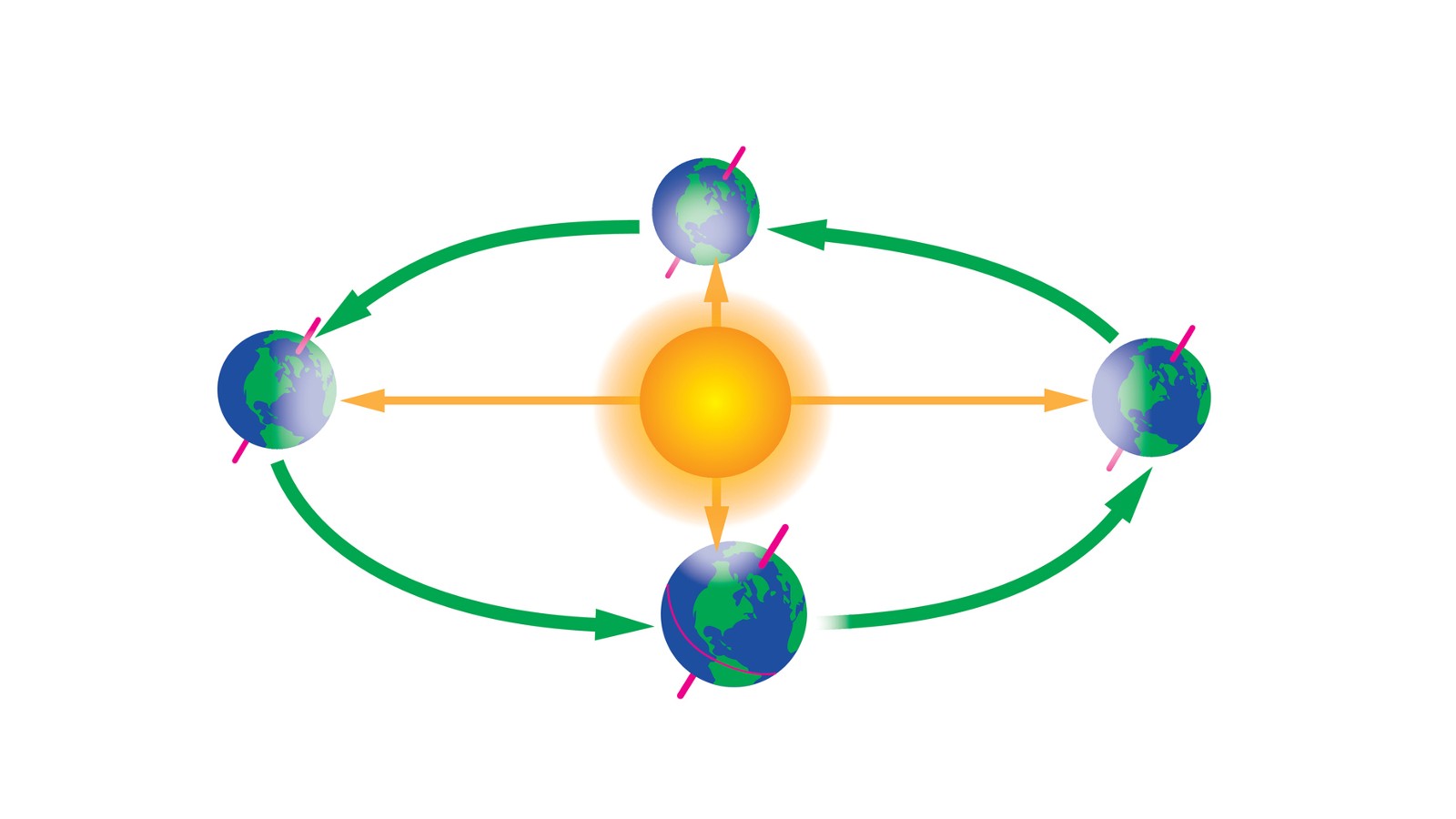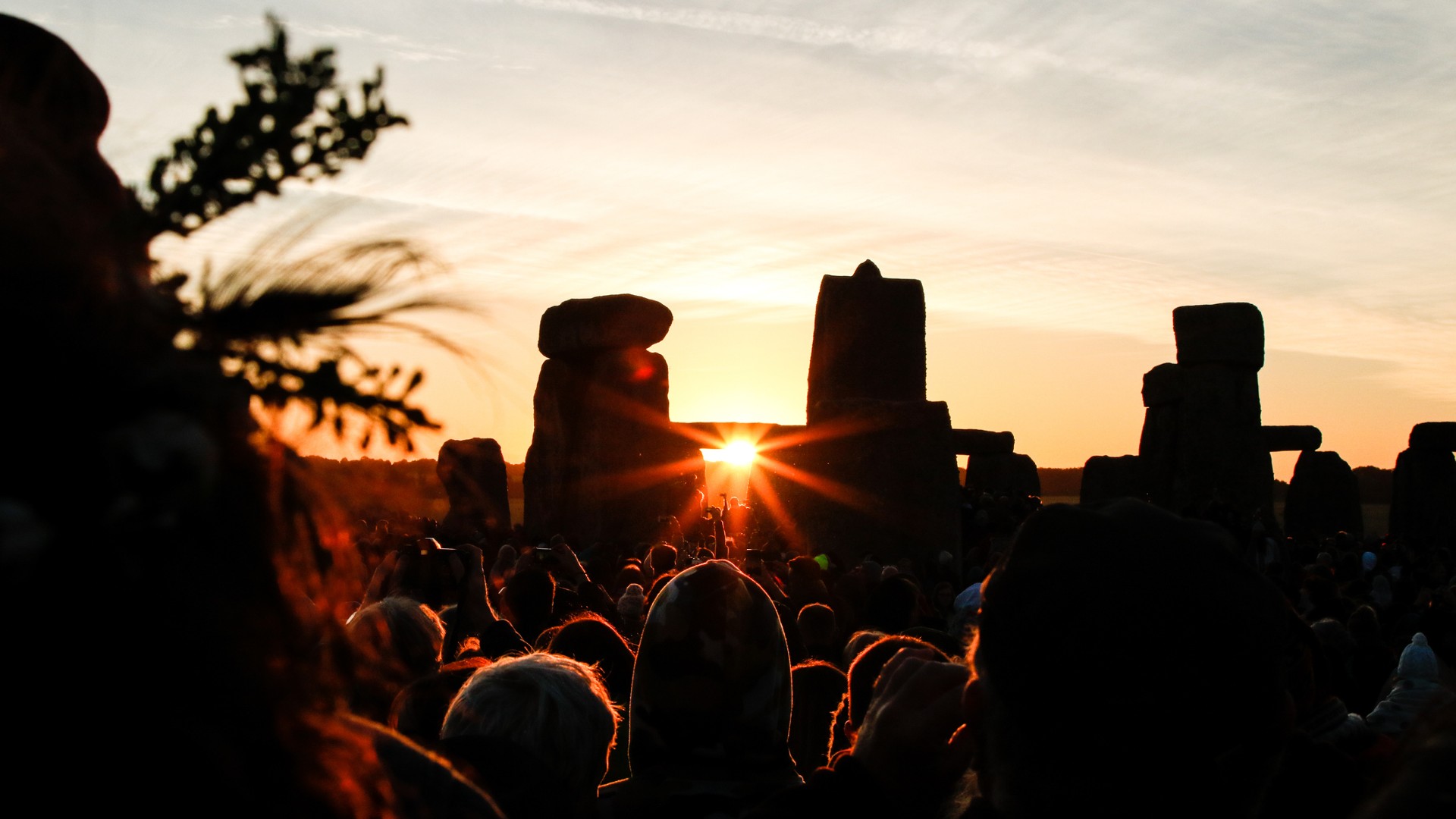Summer solstice 2025: When is the solstice, why does it happen, and how do cultures celebrate?
What is the summer solstice, and when does it happen? The longest day of the year falls on either June 20 or 21 every year in the Northern Hemisphere. Here's everything you need to know about the science, and timing, of the summer solstice.

The summer solstice heralds the start of astronomical summer in the Northern Hemisphere and marks the day with the most daylight for the year. But what's the science behind the longest day and shortest night above the equator?
Solstices and equinoxes are markers of the seasons, which are caused by Earth's axis being tilted 23.5 degrees with respect to its orbit around the sun, according to NASA. That tilt means different parts of Earth receive sunlight for different lengths of time depending on the time of year. On the summer solstice, the Northern Hemisphere is tilted toward the sun, receiving the full glare of the sun's rays — which means the longest day of the year.
At the North Pole, the sun literally does not set on the summer solstice. The exact opposite is true in the Southern Hemisphere, which experiences its winter solstice on the same day; at the South Pole, the sun will not rise.
When does this year's summer solstice begin?
In 2025, the summer solstice will occur at 10:42 p.m. EDT on June 20, according to timeanddate.com. Here's everything you need to know about the Northern Hemisphere's longest day of the year.
What happens to the sun on the summer solstice?
On the summer solstice, there are more hours of sunlight the farther north you go in the Northern Hemisphere. People in this hemisphere might notice that the sun is very high in the sky at noon.
On the equinoxes — the two days of the year when both hemispheres experience the same amount of daylight and nighttime — the sun appears directly overhead, at 90 degrees above the equator at noon. But on the northern summer solstice, the noon sun appears directly overhead at a higher latitude: the Tropic of Cancer, which sits about 23.5 degrees north of the equator and runs through Algeria, Niger, Libya, Egypt, Saudi Arabia, the United Arab Emirates, Oman, India, Bangladesh, Myanmar, China, Taiwan, Mexico, the Bahamas, Mauritania and Mali. The Tropic of Cancer is the most northerly latitude at which the sun can appear directly overhead at noon, according to the Pacific Islands Ocean Observing System, a project based at the University of Hawaii.
Why does the summer solstice date vary?
Each year, the summer solstice in the Northern Hemisphere falls on one of two days: June 20 or June 21. In the Southern Hemisphere, the summer solstice happens on Dec. 21 or Dec. 22.
Get the world’s most fascinating discoveries delivered straight to your inbox.
The date varies because the Gregorian calendar has 365 days, with an extra leap day added in February every four years. In reality, Earth's orbit around the sun takes 365.25 days, according to NASA. Due to this discrepancy, the solstice doesn't always occur on the same day.
Earth's distance from the sun
Some parts of the Northern Hemisphere get so hot during the summertime that you might think Earth is closer to the sun. However, it's actually the opposite: Earth is farthest from the sun when it's summer in the Northern Hemisphere, according to timeanddate.com.
On average, Earth is about 93 million miles (150 million kilometers) from the sun, according to NASA. However, Earth will be farthest from the sun — a moment called aphelion — on July 3, 2025, when it will be 94,502,939 miles (152,087,738 km) from the sun, according to timeanddate.com. That's about two weeks after the June solstice.
Similarly, Earth was closest to the sun, a point called perihelion, at 8:28 a.m. EDT on Jan. 3, 2025 — two weeks after the December solstice — when it was 91,405,992 miles (147,103,686 kilometers) away from our star, according to Live Science's sister site Space.com.
How long is summer?
There are two definitions and dates for each season: astronomical and meteorological.
Astronomically — that is, defined by the solstices and equinoxes — summer in the Northern Hemisphere begins on the summer solstice and ends on the autumnal or fall equinox. So, summer in the Northern Hemisphere lasts from June 20 or June 21 until Sept. 21, 22, 23 or 24.
However, the seasons do not last an equal number of days because Earth's speed varies as it travels around the sun on an elliptical, or egg-shaped, orbit. Summer lasts an average of 93.6 days in the Northern Hemisphere and an average of 89 days in the Southern Hemisphere, according to timeanddate.com.
Meteorological summer in the Northern Hemisphere lasts from June 1 through Aug. 31, according to the U.K.'s Met Office. Using this definition, winter lasts exactly three months, as do all seasons.
What does "solstice" mean?
"Solstice" means "sun stands still" in Latin, according to NASA. That's because the sunrise on the solstice is the farthest northeast and sunset is the farthest northwest of the year. For a few days before and after the solstice, the sun also appears close to these farthest points before slowly drifting back to rise and set due east at the following equinox.
Why isn't the summer solstice the warmest day?
If there's so much sunlight in the Northern Hemisphere during the summer solstice, why isn't it the warmest day of the year?
It's because it takes time for Earth's land and water to heat up, otherwise known as a seasonal lag, according to the Royal Meteorological Society. Seasonal lag is caused by Earth's water, which covers about 70% of the planet's surface and soaks up a lot of the heat, meaning it takes longer to heat up the land.
After the summer solstice, the days begin to get shorter in the Northern Hemisphere. Northern midlatitudes experience about 15 hours of daylight in the weeks following the summer solstice, compared with around 9 hours of daily sunlight around the winter solstice. In addition, the Northern Hemisphere is still tilted toward the sun, making it warm.
When is the summer solstice?
Year | Northern Hemisphere summer solstice | Southern Hemisphere summer solstice |
|---|---|---|
2025 | 10:42 p.m. EDT, June 20 | Dec. 21 |
2026 | 4:24 a.m. EDT, June 21 | Dec. 21 |
2027 | 10:10 a.m. EDT, June 21 | Dec. 21 |
Summer solstice celebrations
Many cultures have recognized and marked the summer solstice. The most famous prehistoric site that ties in with the solstice is Stonehenge in England. When the sun rises on the longest day of the year, the sun's rays align with Stonehenge's Heel Stone. The moment is livestreamed on the official English Heritage YouTube channel.
From the Sphinx in Giza, Egypt, the sun appears to set between the ancient pyramids of Khafre and Khufu on the summer solstice.
This article was updated on June 9, 2025, to include accurate information about the timing of the 2025 summer solstice.

Jamie Carter is a freelance journalist and regular Live Science contributor based in Cardiff, U.K. He is the author of A Stargazing Program For Beginners and lectures on astronomy and the natural world. Jamie regularly writes for Space.com, TechRadar.com, Forbes Science, BBC Wildlife magazine and Scientific American, and many others. He edits WhenIsTheNextEclipse.com.
You must confirm your public display name before commenting
Please logout and then login again, you will then be prompted to enter your display name.




